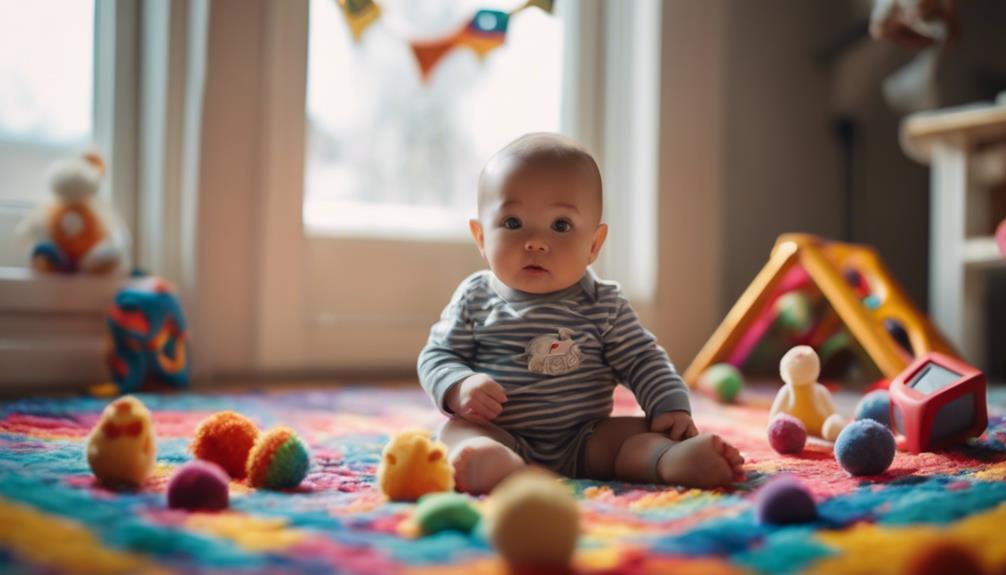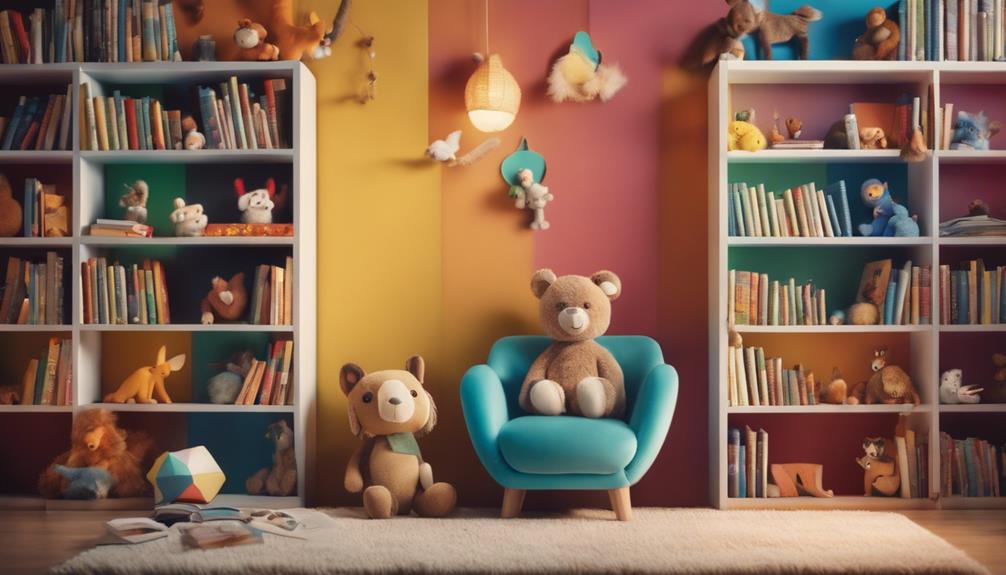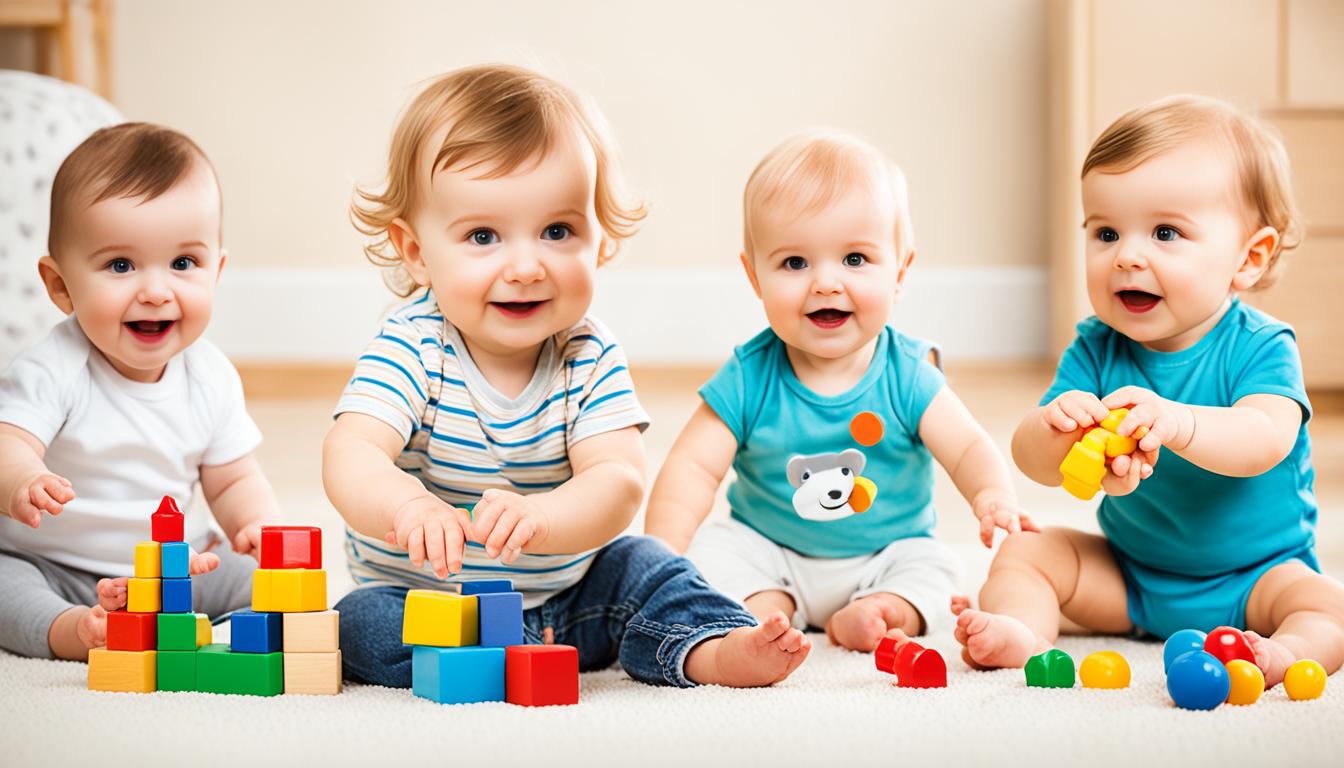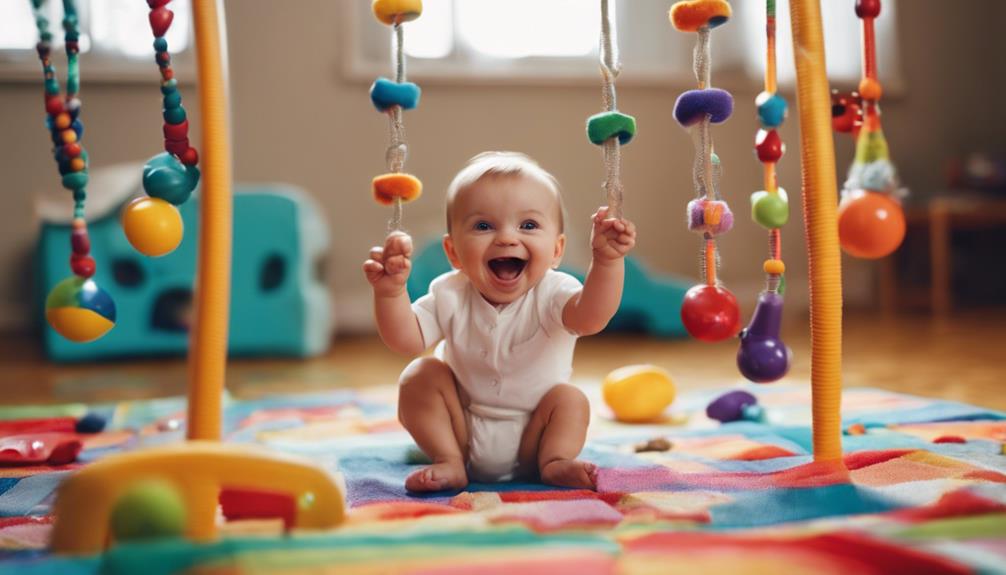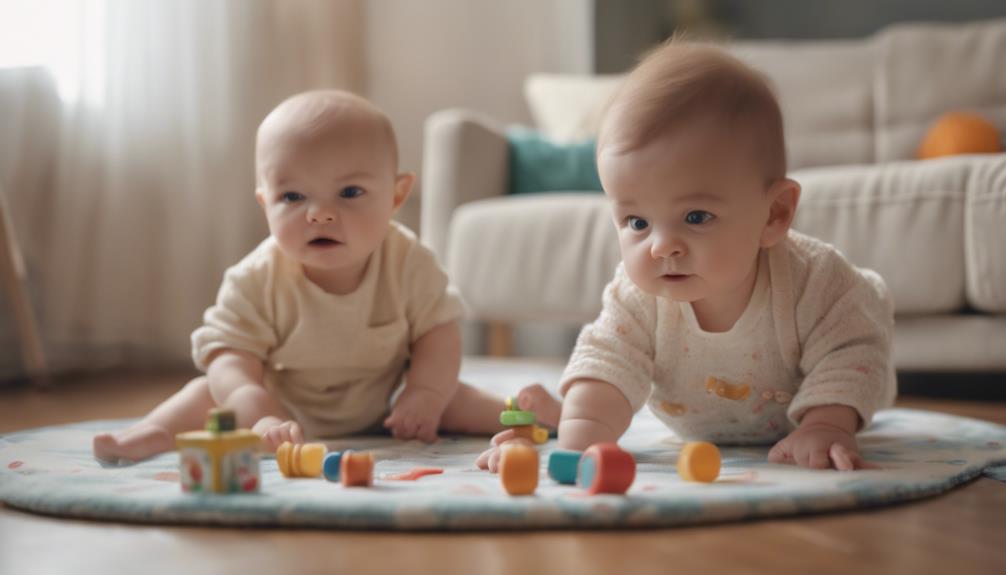Enhance your baby’s sensory development by incorporating sensory play activities like textured balls, colored spaghetti, and water beads. Introduce toys with varying textures, colors, and sounds to stimulate their senses and promote fine motor skills. Encourage cognitive growth with educational sensory videos from platforms like Tiny Adventures TV and Hey Bear Sensory. These videos provide auditory and visual stimulation, aiding in building neural connections in the brain, enhancing language skills, and fostering social interactions. Implementing these tips and tricks will help boost your baby’s cognitive development and overall holistic growth. Further insights await for your baby’s sensory journey.
Key Takeaways
- Engage in sensory play like textured balls and water beads for stimulation.
- Use toys with varied textures, sounds, and colors for sensory development.
- Rotate toys regularly to introduce new sensory experiences.
- Incorporate sensory videos from platforms like Tiny Adventures TV and Hey Bear Sensory.
- Ensure a safe and secure environment to encourage exploration and sensory play.
Sensory Development Overview
When it comes to understanding how babies process information from their environment through their senses, sensory development offers an important insight.
In the early stages of life, a baby's sensory development plays a significant role in their understanding of the world around them. Babies naturally explore different textures, sounds, and sights to make sense of their surroundings.
Through sensory play, such as feeling different fabrics, listening to soothing sounds, and observing bright colors, babies engage their senses and build essential neural connections in the brain.
Importance of Sensory Play
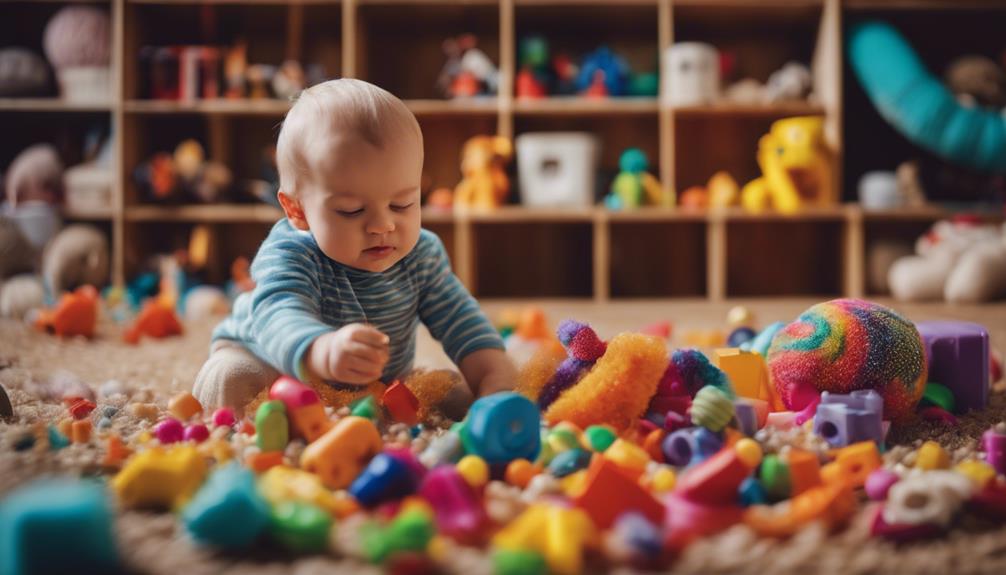
Exploring sensory activities with your baby fosters essential neural connections in the brain and supports their overall development. Sensory play isn't just about having fun; it plays an essential role in the early stages of your baby's growth.
Engaging in sensory experiences through play helps in building nerve connections and pathways in the brain, which are important for cognitive development. By stimulating different senses simultaneously, sensory play activities encourage holistic development, enhancing coordination and understanding of the world around them.
For babies, sensory play is more than just a simple activity; it's a fundamental building block for their learning journey. Through sensory experiences, infants start to make sense of their surroundings and develop crucial skills that pave the way for future learning and interactions.
Developmental Milestones: 0-3 Months
In the first 0-3 months of your baby's life, they show early sensory responses through their preference for gentle touch and skin-to-skin contact.
Tummy time benefits their movement development, especially with the important role of vestibular reflexes.
Interactive play ideas can involve gentle movements to enhance proprioception awareness during this milestone.
Early Sensory Responses
Throughout the first 0-3 months of your baby's life, their early sensory responses play an essential role in their overall development. Your baby's tactile system is fully developed at birth, allowing them to respond to gentle touch and explore different textures.
They exhibit vestibular reflexes that affect movement, such as balancing and sitting up, within the first 6 months. Engaging in proprioception activities, like gently moving their body parts, helps your baby develop body awareness in the initial months.
Additionally, your baby's visual system begins to focus on black and white patterns, laying the foundation for future visual development during the first 0-3 months. Pay attention to these sensory cues and provide your baby with a variety of sensory experiences to support their growth and development.
Encouraging gentle touch, movement, and visual stimuli will help nurture your baby's early sensory responses and contribute to their overall sensory development.
Tummy Time Benefits
Engaging in tummy time sessions during the first 0-3 months can greatly benefit your baby's developmental milestones. Tummy time plays an important role in your baby's development by helping to strengthen neck, back, and shoulder muscles essential for motor skills. It also aids in preventing flat spots on the head, promoting healthy physical development.
Encouraging your baby to engage in tummy time multiple times a day for short durations can have a substantial impact on their growth. During these sessions, babies learn to lift their heads, improving visual tracking abilities and overall strength. By incorporating tummy time into your daily routine, you provide your baby with valuable sensory experiences that contribute to their developmental progress.
Interactive Play Ideas
Utilize gentle touch and colorful stimuli to enhance your baby's sensory development during the critical 0-3 month period. Interactive play is essential for your baby's growth.
Introduce sensory toys like rattles to encourage grasping and shaking, promoting motor skills development. Engage in skin-to-skin contact and play in various positions to enhance balance and movement skills.
Incorporating visual stimulation is also important; consider hanging colorful mobiles above the crib for your baby to track and focus on. These activities not only aid in sensory development but also foster bonding and comfort through skin-to-skin contact with you or other caregivers.
Developmental Milestones: 3-6 Months
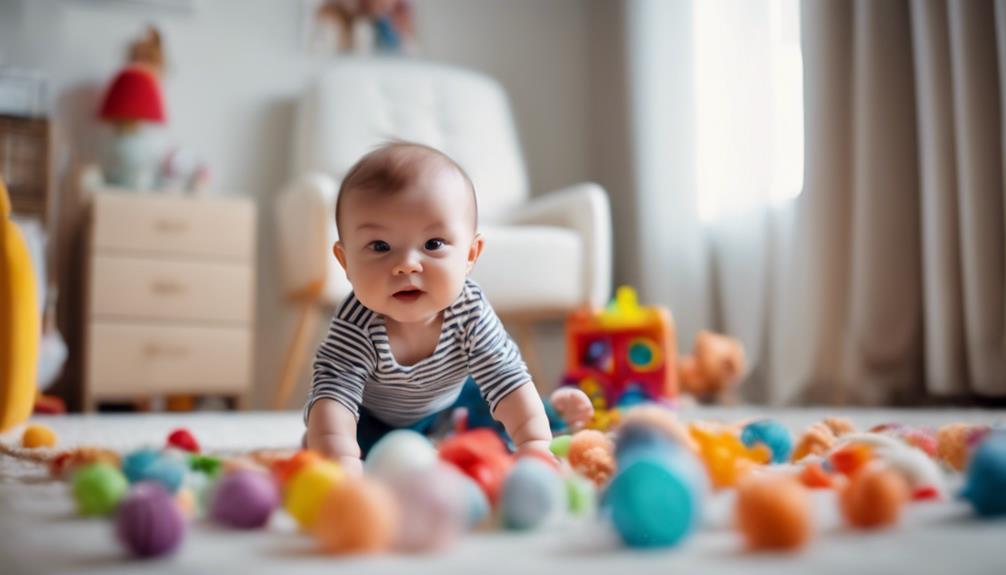
At 3-6 months, babies start honing their visual tracking skills, following objects and people from afar with more focus.
This period also sees an increase in tactile sensory exploration, as infants touch and bring objects to their mouths for sensory input.
It's an important time for balance and movement development through activities like sitting and gentle body movements.
Visual Tracking Skills
Developing between 3-6 months of age, babies start honing their visual tracking skills by following moving objects with their eyes and turning their heads to track sounds and movements. This skill is essential for enhancing hand-eye coordination, depth perception, and strengthening eye muscles.
Encouraging babies to track objects not only aids in their visual development but also improves their overall sensory processing abilities. Here are some tips to help enhance your baby's visual tracking skills:
- Use a colorful toy and move it slowly in front of your baby to grab their attention.
- Make noises or sounds to encourage your baby to turn their head in different directions.
- Play games like peek-a-boo to engage your baby's visual tracking abilities.
- Hang a mobile above their crib for them to focus on and follow the movement.
- Place toys of different shapes and colors around your baby to stimulate their visual senses.
Tactile Sensory Exploration
Exploring tactile sensory experiences becomes an important focus for babies aged 3-6 months as they begin to touch objects and bring them to their mouths. During this developmental stage, babies are keen on discovering different textures, shapes, and sizes through hands-on exploration.
It's essential to engage babies in tactile sensory play by offering various objects with diverse tactile qualities. Encouraging them to feel different fabrics, play with textured balls, and explore objects of varying shapes can aid in their sensory development. By the age of 6 months, babies might start showing a preference for specific textures, indicating their growing interest in tactile exploration.
Tactile sensory play at this stage plays a significant role in helping babies build neural connections related to touch. These experiences promote sensory awareness and contribute to the development of fine motor skills. By providing opportunities for babies to engage in tactile exploration, caregivers can support their sensory development during this critical phase of growth.
Developmental Milestones: 6-9 Months
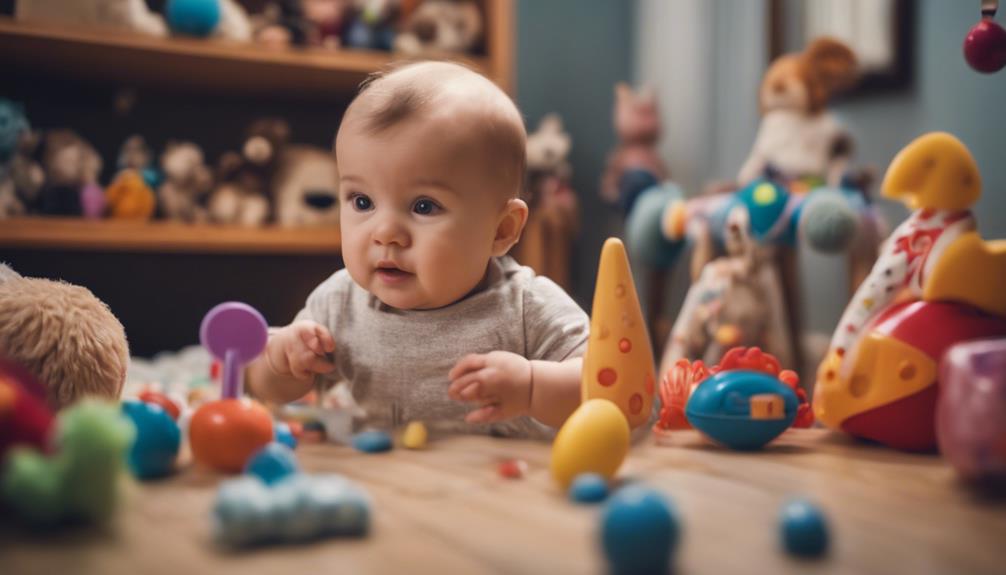
By 6-9 months old, your baby is actively engaging with their environment through sensory exploration and play. This stage is pivotal for their development as they start grasping objects, enjoying a variety of textures, and exploring the world around them.
To support your baby's growth during this period, consider the following:
- Grasping Skills: Encourage your baby to practice grasping objects of different shapes and sizes to enhance their hand-eye coordination.
- Sensory Experiences: Introduce your baby to various textures, sounds, and objects to stimulate their senses and cognitive development.
- Exploring Objects: Allow your baby to explore safe objects, promoting curiosity and understanding of their properties.
- Safe Environment: Create a secure space for your baby to move around freely and explore without any hazards.
- Self-Feeding: Begin introducing self-feeding practices to develop your baby's independence and fine motor skills.
Engaging in these activities will help your baby reach important milestones and foster their sensory development effectively.
Developmental Milestones: 9-12 Months
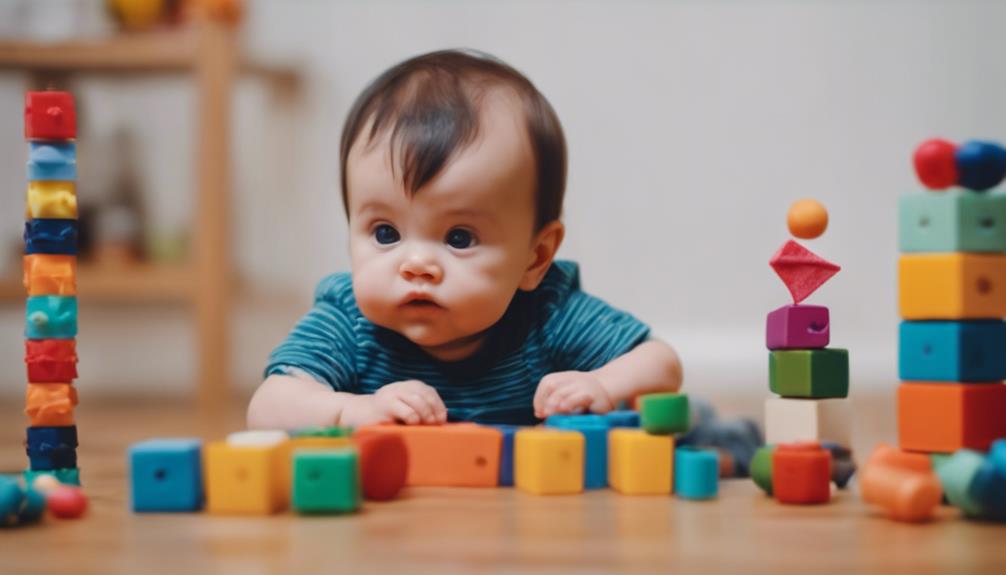
As your baby progresses from 9 to 12 months, you'll notice improvements in their motor skills, language development, and cognitive growth. Encourage them to grasp objects like rattles to enhance their fine motor skills and engage in activities that boost their independence and coordination.
Naming properties of objects and exploring different textures will help stimulate their cognitive development and understanding of the sensory world.
Motor Skills Progression
Around 9-12 months, babies make significant strides in their motor skills progression, demonstrating increased dexterity and coordination. During this period:
- Babies develop the ability to grasp objects like rattles, teethers, and toys, enhancing their fine motor skills.
- They start naming properties of objects they touch, showing cognitive progress in understanding their surroundings.
- Encouraging self-feeding helps fine-tune their motor skills and promotes independence.
- Providing a variety of textures for exploration aids in sensory development and language acquisition.
- Engaging in interactive games like the pat-a-cake game further supports motor skills and social interaction.
Language Development Boost
Encourage your baby's language development by actively engaging in naming objects and introducing varied textures during the 9-12 months developmental milestone. At this stage, babies start naming properties of objects they touch, enhancing their language skills.
Interactive games like pat-a-cake can't only strengthen social bonds but also aid in language development. Additionally, introducing colorful toys can help babies learn new words and concepts.
Encouraging self-feeding is another great way to boost language development. As your baby explores different textures through self-feeding, they aren't only developing independence but also improving their fine motor skills. Moreover, introducing a variety of textures and naming them can aid in sensory and language development.
Cognitive Growth Strategies
Enhancing your baby's cognitive growth at the 9-12 months developmental milestone involves encouraging active exploration and stimulating sensory experiences. Here are some strategies to help boost your baby's cognitive development during this critical stage:
- Grasping Objects: Encourage your baby to grasp objects like rattles and toys to enhance motor skills.
- Naming Objects: Help your baby learn by naming the properties of objects they touch, boosting cognitive development.
- Introducing Textures: Stimulate sensory exploration by introducing a variety of textures and naming them.
- Coordination Activities: Engage in games like pat-a-cake to promote coordination and cognitive growth.
- Self-Feeding: Encourage self-feeding and exploration of different textures to enhance sensory and cognitive development.
Developmental Milestones: 12-18 Months
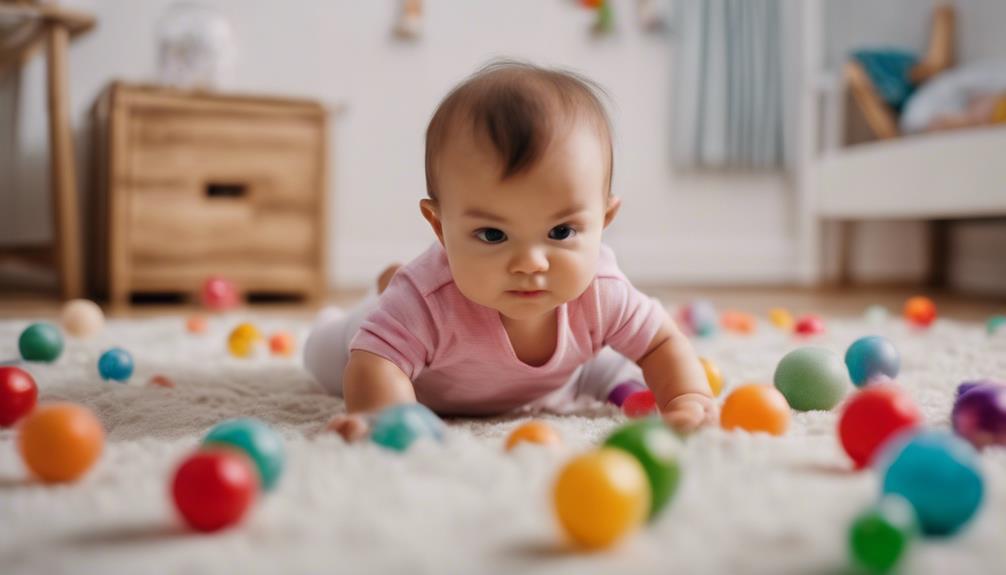
Babies aged 12-18 months typically begin grasping objects like rattles and teethers to improve hand-eye coordination. Encouraging them to name the properties of the objects they touch enhances cognitive development. Introducing various textures, sizes, smells, and sounds through toys and activities stimulates sensory development. Engage in games like pat-a-cake to promote social interaction and communication skills. Providing opportunities for climbing, water play, and exploring different sensory experiences contributes to holistic development.
| Developmental Milestones: 12-18 Months |
|---|
| Sensory Development |
| Improve hand-eye coordination by grasping toys. |
| Encourage exploring different textures for sensory stimulation. |
| Motor Development |
| Engage in activities promoting climbing and exploration. |
| Play games like pat-a-cake for social interaction. |
Toys for Sensory Stimulation
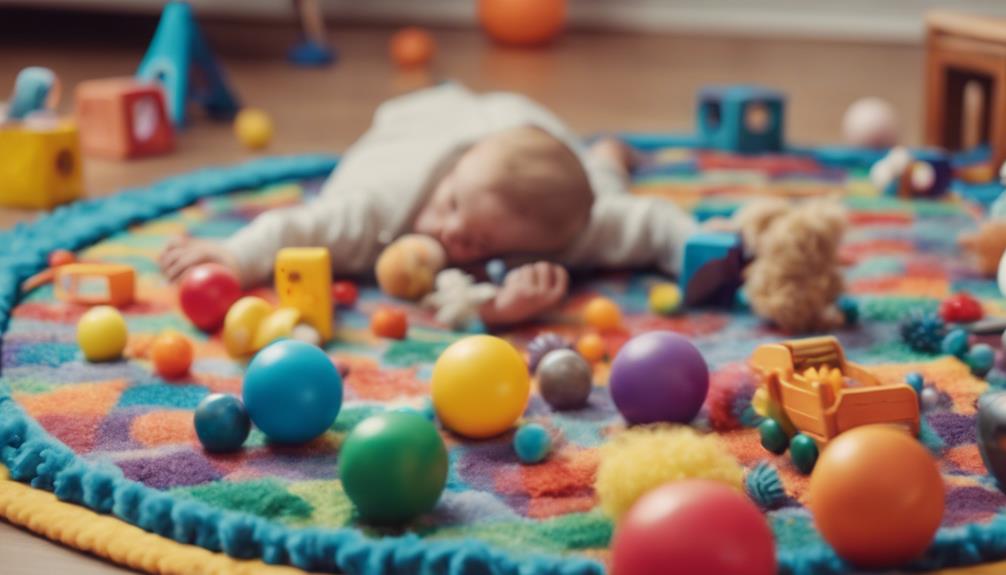
Select toys that engage multiple senses simultaneously by incorporating various textures, colors, and sounds for sensory stimulation. When choosing toys for sensory development, consider options that offer different textures to enhance sensory inputs.
Opt for toys that not only stimulate the senses but also promote fine motor skills development through exploration and manipulation. Verify the toys are age-appropriate, safe, and easy to clean for sensory play activities.
Look for toys that provide varying levels of sensory input to keep babies engaged and interested. Remember to rotate toys regularly to introduce new sensory experiences and prevent sensory adaptation.
- Choose toys with different textures to provide a range of sensory inputs.
- Opt for toys that promote fine motor skills development through exploration.
- Verify toys are age-appropriate, safe, and easy to clean.
- Look for toys that offer varying levels of sensory input to maintain interest.
- Rotate toys regularly to prevent sensory adaptation and introduce new experiences.
Fun Sensory Activities
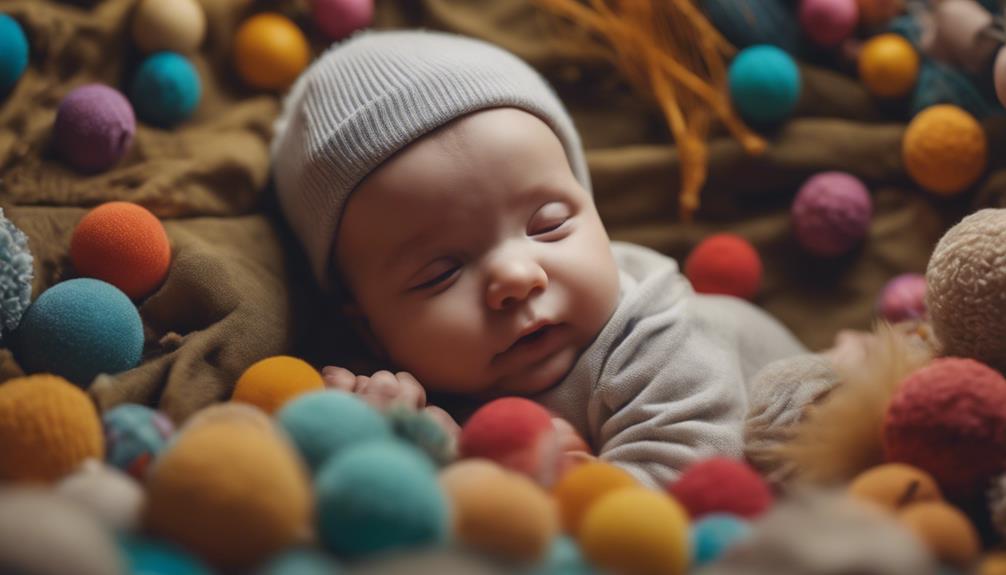
Engage in various sensory activities to stimulate your baby's development and foster essential skills. Create a multi-sensory experience by playing with textured balls, colored spaghetti, and water beads. These activities not only enhance sensory development but also encourage exploration and discovery.
Introduce toys that make sounds, have bright colors, and pleasant aromas to further enrich the sensory playtime. For tactile stimulation, try sensory painting, mud putty play, or making Oobleck with your little one. These hands-on experiences help in refining sensory processing and fine motor skills.
To enhance your baby's sensory development further, consider utilizing educational sensory videos from platforms like Tiny Adventures TV and Hey Bear Sensory. These videos can provide additional stimuli and aid in cognitive development.
Videos for Sensory Engagement
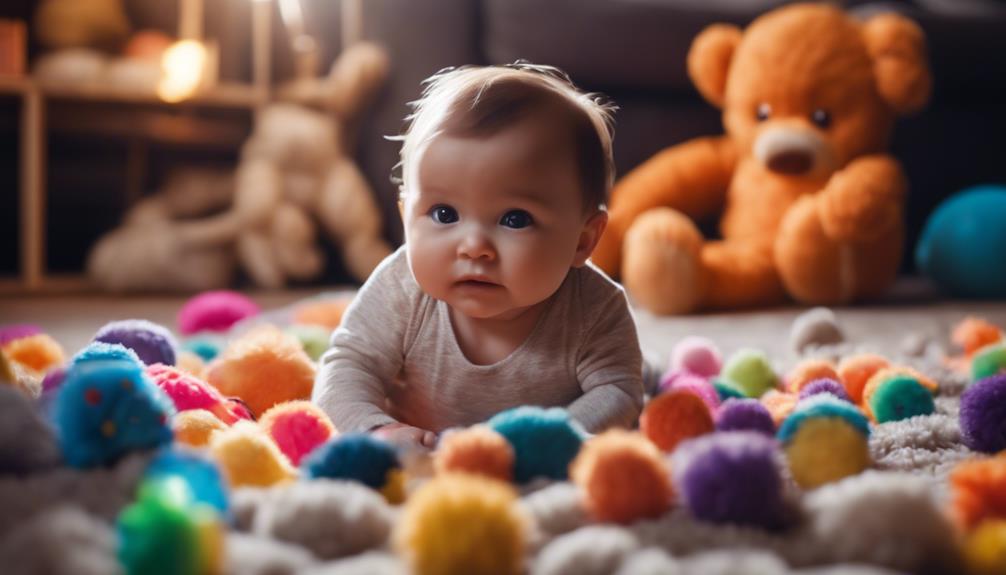
Consider incorporating educational videos from platforms like Tiny Adventures TV and Hey Bear Sensory to enhance your baby's sensory engagement. These sensory videos provide a combination of auditory and visual stimuli that can help your baby learn and promote their sensory development. By including these videos in your baby's daily routine, you can introduce them to a variety of colorful visuals, soothing sounds, and stimulating sensory experiences that can have positive effects on their cognitive development, language skills, and social interactions.
Watching these videos offers a multi-sensory experience that aids in building nerve connections and pathways in the brain, fostering coordination between different senses in your baby. They can be a valuable tool for parents looking to enrich their baby's sensory development in a fun and engaging way.
- Incorporate sensory videos from Tiny Adventures TV and Hey Bear Sensory
- Provide auditory and visual stimulation
- Enhance cognitive development and language skills
- Encourage social interactions
- Aid in building nerve connections in the brain
Frequently Asked Questions
How Do You Support Sensory Development in Infants?
To support sensory development in infants, engage in activities like tummy time, provide sensory toys and textures, encourage interactions through singing and talking, create a stimulating environment, and incorporate sensory play into daily routines.
How to Increase IQ Level of Baby?
To increase your baby's IQ level, engage in interactive activities, introduce varied sensory experiences, provide a stimulating environment with age-appropriate toys, encourage physical movement and exploration, and offer love and positive interactions to foster intellectual growth.
How to Train a Baby Sensory?
To train a baby's sensory skills, engage in activities that involve touch, sound, sight, taste, and smell. Use colorful toys, textured objects, and stimulating sounds to create a multi-sensory experience. Encourage coordination between senses for best development.
What Are the Techniques for Infant Stimulation?
To stimulate your infant, engage in skin-to-skin contact, gentle touch, and play with age-appropriate toys. Encourage sensory exploration by touching various textures, playing with colorful balls, and exploring objects with both hands.
Conclusion
In summary, enhancing your baby's sensory development is essential for their overall growth and learning. By incorporating sensory play, toys, activities, and engaging videos, you can help your little one reach important developmental milestones.
Remember, every baby is unique, so don't be afraid to try different techniques and see what works best for your child. Keep exploring and stimulating their senses to create a rich and fulfilling environment for their growth and development.
Happy playing!

